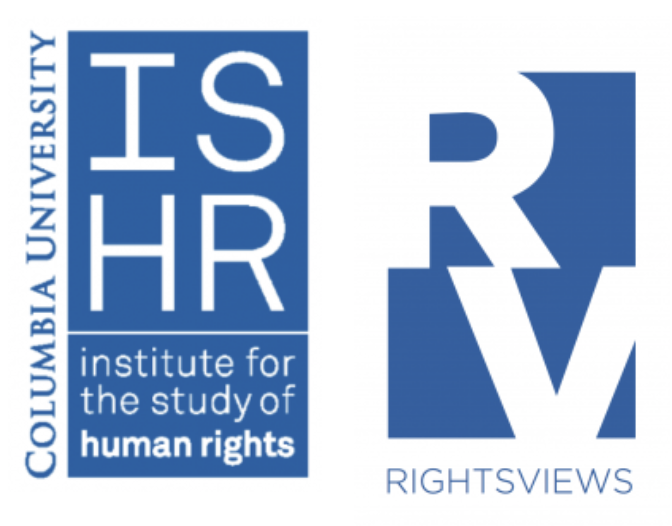By Lindsey Alpaugh, RightsViews staff writer.
Gowanus became one of the most sought-after neighborhoods in New York City in the 2010s, famous for its Whole Foods, art scene, and the canal. The Gowanus canal is a historic industrial site, hosting a combination of toxic chemicals and CSOs (Combined Sewage Outflows). The chemical and industrial pollution was so bad that in 2010, the Gowanus Canal was designated as a Federal Superfund site by the U.S. Environmental Protection Agency (EPA). This designation began a $500 million clean-up effort, which involved dredging contaminated sediment from the canal.
Despite these environmental hazards, the neighborhood experienced an influx of wealthier new residents. From 2000 to 2013, the average home value in Gowanus increased 145.78%. What does environmental justice look like in a gentrifying, formerly industrial neighborhood that sits in a flood zone and is home to one of the most toxic waterways in the United States?
The Gowanus canal first became an industrial zone by the mid 19th century. As described by the EPA: “Manufactured gas plants (MGP), paper mills, tanneries and chemical plants operated along the Canal and discharged wastes into it. In addition, contamination flows into the Canal from overflows from sewer systems that carry sanitary waste from homes and rainwater from storm drains and industrial pollutants. As a result, the Gowanus Canal has become one of the nation’s most seriously contaminated water bodies. More than a dozen contaminants, including polycyclic aromatic hydrocarbons, polychlorinated biphenyls and heavy metals, including mercury, lead and copper, are found at high levels in the sediment in the Canal.” In addition to the chemicals that lurk within the canal, CSOs, or combined Sewage Overflows, pour into the canal daily. Currently there are eleven CSO sites along the canal.
Federal cleanup on the canal began in 2013. The EPA superfund project has the stated goals of protecting human health and the environment by cleaning up contaminated sites, making responsible parties pay for cleanup work, involving communities in the Superfund process; and returning Superfund sites to productive use. The cleanup of the canal involves the dredging of the canal to remove pollutants such as tar. However, the EPA is only mandated to clean the chemical pollutants, and has mandated the city to clean the CSOs, which the city has yet to address.
In addition to the chemical and bio-waste contaminants in the canal, the neighborhood sits a “Special Flood Hazard Area ” due to its location on the coast. This designation was proven in 2012 with Hurricane Sandy, where much of the coastal tri-state area experienced severe flooding. From National Geographic: “Sandy is considered the fourth most expensive storm in U.S. history, and more than 600,000 housing units were destroyed in New Jersey and New York. The government of New York City estimates that $19 billion in damage was inflicted on the city alone. Five years after Sandy, more than a thousand New Jersey residents reported still being unable to return home.” In Gowanus, this type of flooding meant that contaminated water from the canal was seeping into homes and basements, posing additional health and safety hazards to residents.
In their 2016 book, Taking Chances : The Co ast After Hurricane Sandy, authors Karen M. O’Neill and Daniel J. Van Abs argued that Hurricane Sandy could force coastal communities to either prepare for extreme storms, or move to a more protected area. “Residents to a certain extent may be able to draw lessons about adoption from their understanding of past conditions, but climate change will soon defy lessons from the past about tides, storms, ecology and safety.” The growing risk of climate change in the area will force residents and local governments to radically rethink land use and storm protection in areas such as Gowanus. For the neighborhood specifically, the combination of the toxic chemicals, CSO’s, and location within a coastal flood zone makes Gowanus seem like a difficult place to encourage residents to move to.
ast After Hurricane Sandy, authors Karen M. O’Neill and Daniel J. Van Abs argued that Hurricane Sandy could force coastal communities to either prepare for extreme storms, or move to a more protected area. “Residents to a certain extent may be able to draw lessons about adoption from their understanding of past conditions, but climate change will soon defy lessons from the past about tides, storms, ecology and safety.” The growing risk of climate change in the area will force residents and local governments to radically rethink land use and storm protection in areas such as Gowanus. For the neighborhood specifically, the combination of the toxic chemicals, CSO’s, and location within a coastal flood zone makes Gowanus seem like a difficult place to encourage residents to move to.
Despite the various environmental factors that threaten the residents of Gowanus, there is a large rezoning project underway. In June 2018, the city released its plan, “Gowanus Neighborhood Plan.” If approved, developers would be allowed to build residences as high as 22 stories next to the canal. Proponents of the project argue that the plan will create below-market-rate apartments in a city that desperately needs more affordable housing. Critics will point out that the Gowanus rezoning will have dire environmental and health consequences for residents.
One of the most contentious sites of the rezoning project is Gowanus Green. The project, set to be built near Smith and Fifth streets, plans to build 1,000 below-market-rate apartments and a new public school. The project looks to address the rising housing costs in the neighborhood. However, the location of the lot poses serious health problems. The lot has 100 year old tar deposits from gas manufacturing. In a community meeting in December 2020, Superfund Project Manager Christos Tsiamis said that “if you put a structure like a school or a building, those compounds that are 8, 10, 15 feet down, they will volatilize. It might be in five years, it might be in 10 years, they will find a path and they will come inside the enclosed structure and they will build up.” The toxins in the tar include Naphthalene, benzene, toluene, ethylbenzene, and xylene, with the last four being known together at BTEX. From an opinion piece in the Brooklyn Paper by Linda LaViolette, Miranda Sielaff and Nora Almeida of voice of Gowanus, “the public health risk of building housing on this site is clear: the CDC and National Institutes of Health have linked prolonged exposure to BTEX pollutants through air vapors directly to increased cancer rates and blood disorders.”
Many of those who are advocating for promoting diversity within the neighborhood are also allocating the most dangerous lots for affordable housing. In an opinion piece in the local investigative news outlet, City Limits, City Councilmember Brad Lander, City Planning Commissioner Michel de La Uz, and Executive director for the Association for Neighborhood and Housing Development Barika Williams attempted to argue that rezoning Gowanus would help achieve greater racial equity in the city. They write, “rather than fuel displacement and gentrification in a low income, working class neighborhood, the rezoning would be a force for racial and economic integration in a wealthy, white one. That’s the opposite of gentrification.” The article’s focus on framing Gowanus as a white and wealthy neighborhood ignores the underlying environmental risk that will only become increasingly more lethal with the rise of climate change. Gowanus may be increasingly more desirable, but many of the environmental hazards in the area persist and will plague those who live there. New York City undoubtedly needs to expand its affordable housing program. However, building affordable housing not only over a toxic waste site but also in an increasingly vulnerable flood zone does active harm to those who live there.
The situation in Gowanus underscores the necessity of protecting poor and working class populations in the fight for clean waterways. The EPA defines environmental justice as “the fair treatment and meaningful involvement of all people regardless of race, color, national origin, or income, with respect to the development, implementation, and enforcement of environmental laws, regulations, and policies. This goal will be achieved when everyone enjoys the same degree of protection from environmental and health hazards, and equal access to the decision-making process to have a healthy environment in which to live, learn, and work.”
While Gowanus is one neighborhood, the battle over its future offers insight into how cities will handle questions of environmental justice and gentrification.
Photo Credit:
“Environmental Justice” by uusc4all is licensed under CC BY-NC-ND 2.0
“Gowanus, Brooklyn” by Shawn Hoke is licensed under CC BY-NC-ND 2.0
“the bat cave, gowanus, brooklyn” by Adam Lerner is licensed under CC BY-NC-SA 2.0

